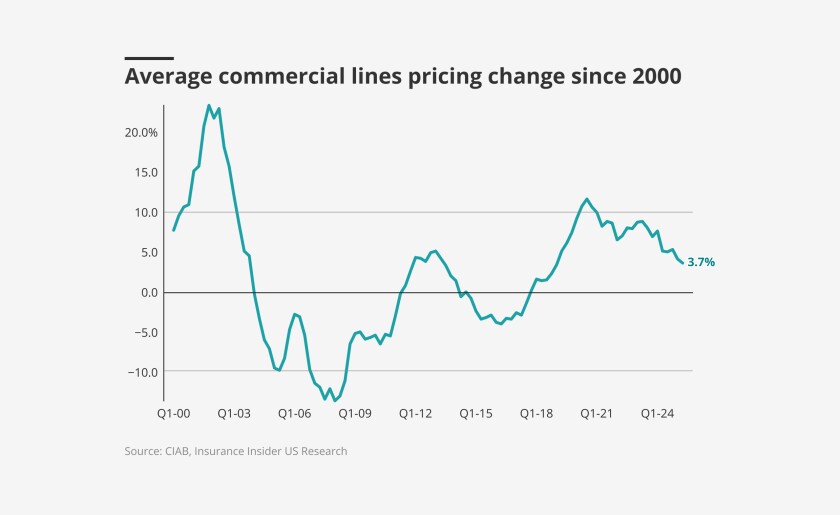
Last week, CIAB’s Q2 2025 commercial lines pricing survey showed an average premium increase of 3.7%, down 0.5pts from Q1 2025 and down 1.5pts

Last week, CIAB’s Q2 2025 commercial lines pricing survey showed an average premium increase of 3.7%, down 0.5pts from Q1 2025 and down 1.5pts